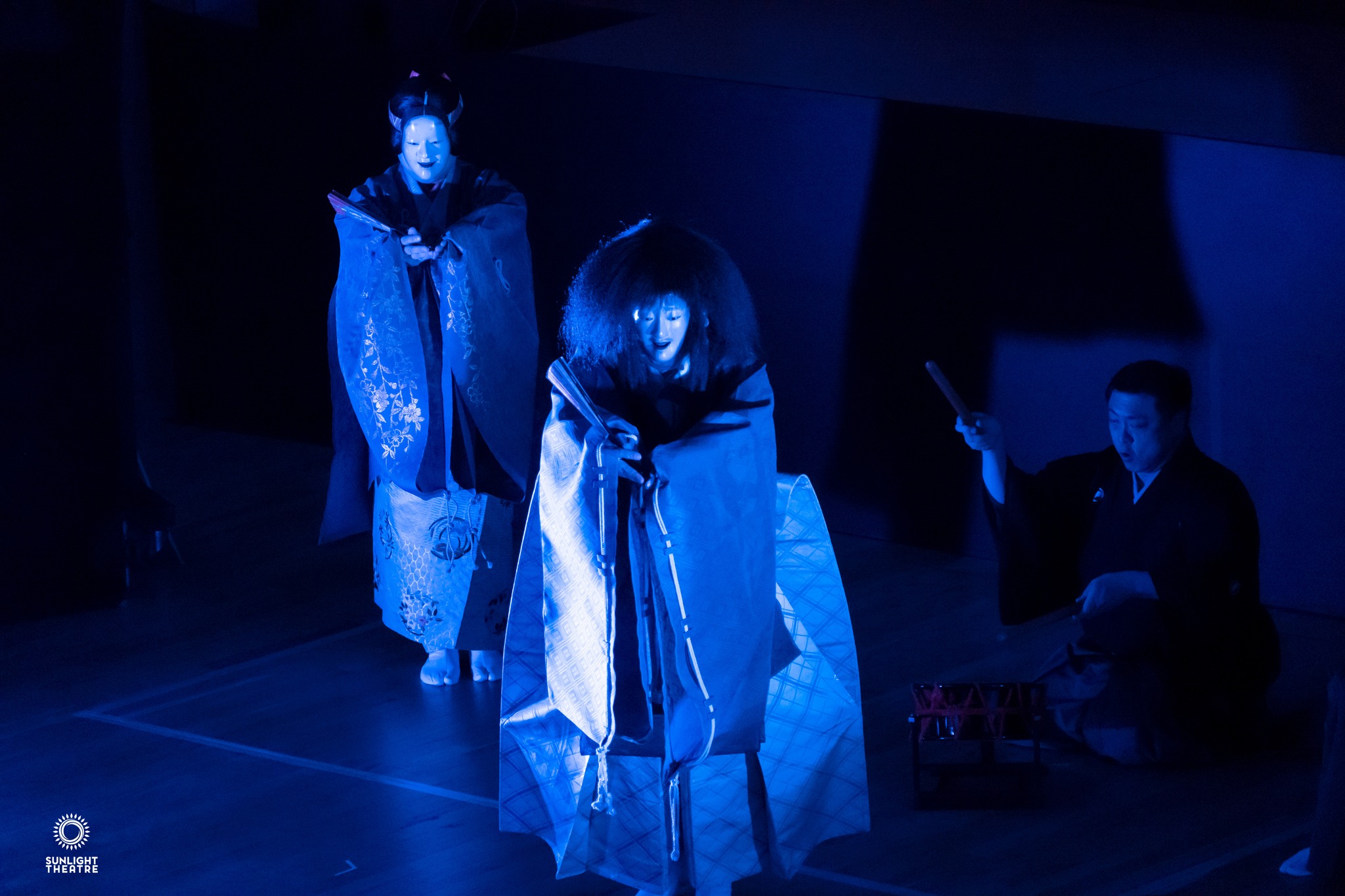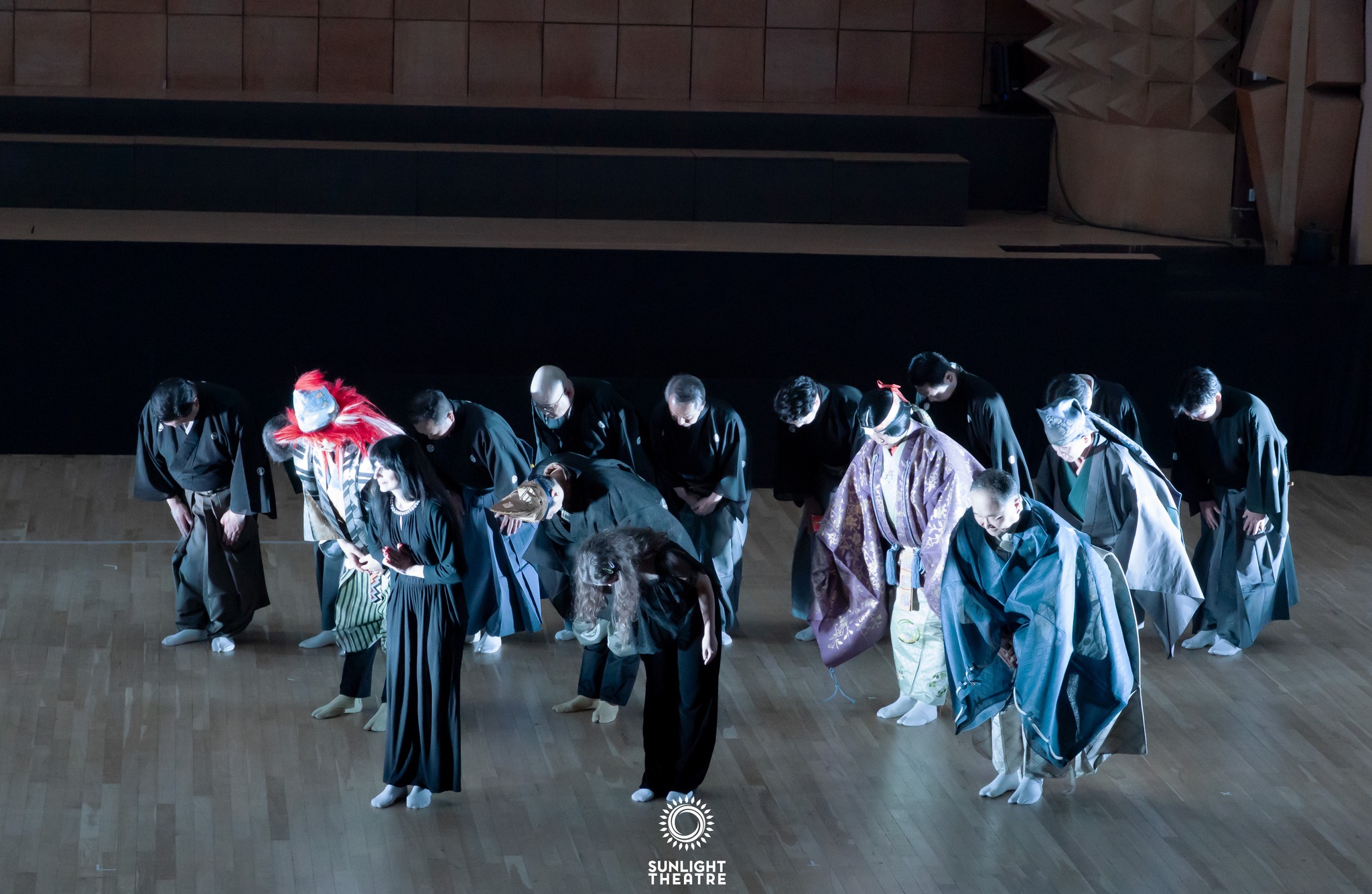written by Ivona Iacob

As the oldest existing Noh theater in Osaka, Yamamoto Noh Theater has dedicated the past almost 100 years to the performing arts and celebrating traditional and classical theater. Furthermore, the theater has also aimed to share the particular ancient style of Noh with the world, through performances in many countries, including Romania. When it was time for their second performance in Timisoara, we were delighted to be offered the opportunity to facilitate this event, under the umbrella of our theater festival, Sunlight Theatre. Sunlight Theatre aims to bring to the public new and exciting performances that span all categories and types of performing arts. We also want to ensure that our audiences have unique and lasting experiences that will forever connect them to the world of the performing arts. Within the context of Timisoara’s status as capital of culture this year, it has been more important than ever to establish such cultural connections.
Yamamoto Noh Theater also understands the importance of creating such a connection to its public, which was evident in their July 3rd representation of “Faust – a Confession.” Leading up to the performance, the artists and team of Yamamoto Noh Theater carefully analyzed the space, to ensure that the standards of their Noh performance could be implemented within the structure of Filarmonica Banatul, our host for the evening. The text of the play was translated to both English and Romanian, with subtitles projected along with the play. To further familiarize the audience with the content they were about to see, an introductory presentation of the type and significance of the traditional musical instruments used in the play took place before the performance. The musical artists took to the stage and introduced the audience to the components of their orchestra, as they relate to the history of Noh, the materials that were used in their making and the thematic importance of each instrument. Also as part of the play, two Romanian musical performers were invited to sing, bringing a European musical dimension to the Japanese one.

In front of an audience of hundreds, including Timisoara’s mayor, Yamamoto Noh Theatre then managed to create an air of reverence that stood as a reminder of what the performing arts can be – a combination of talent, artistry, hard work and creativity. The story takes the audience through the world of spirits and confessions through an adaptation of Faust’s character. Every component, whether technical or creative, constituted an essential part of the success of the play. The performance of Faust at the Filarmonica Banatul building combined both traditional and modern elements. While the music, masks and acting style were linked to the traditional Noh style, the set and lighting were more reminiscent of modern technology. Furthermore, the material itself related to Goethe’s Faust, but the interpretation was Japanese. These contrasting elements however found themselves in perfect balance, under the true artistic vision of Mr. Akihiro Yamamoto.
The performance was preceded by two short speeches by Romanian personalities that aimed to engage the audience with the material they were about to see, by talking about Noh, Faust and Goethe and encouraging an inquisitive spirit. One overarching question arising from these speeches was “how does one combine all these elements?” “Faust” provided a clear, resounding answer. The know-how (or perhaps the “noh-how”) to achieve this balance comes from almost one hundred years of practice. We also had the opportunity to interview Mr. Akihiro Yamamoto and ask him questions regarding the legacy and impact of Noh and he revealed one other essential element. Mr. Yamamoto emphasized the importance of community in Noh and of people coming to work together to create such a performance.
With Sunlight Theatre, we aim to foster a cultural community and encourage people to come together and enjoy all that theater has to offer. With community as an essential element both on and off stage, it becomes evident how cultural connections and sensibilities can be used to strengthen relations among individuals and why it is important to ensure that many people have access to as many of these performances as possible.

The standing ovation that followed the end of the play was a testament to the cultural connection created that evening and even perhaps an opportunity to add many new members to the cultural community through this unique theatrical experience. We hope to be able to continue this collaboration in coming years and to bring more of Yamamoto Noh Theatre’s extensive repertoire of performances to Timisoara.
